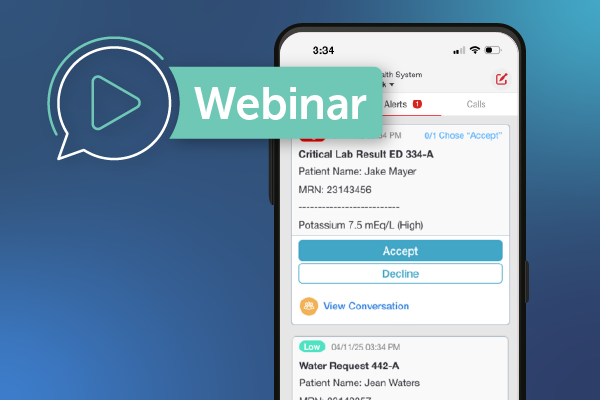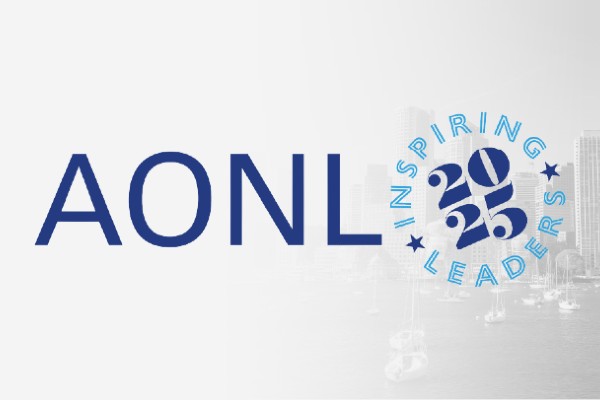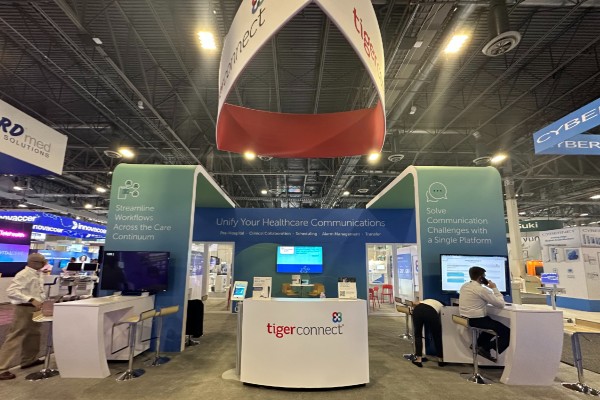
Dr. Will O’Connor discusses how healthcare organizations are at the tipping point of adopting better communication and collaboration tools
Think about the last time you communicated with someone. Maybe you sent a friend a quick text message to say you’re running late for dinner. Simple, direct communication. Now, think about the last time that you communicated with a patient. Not exactly simple, is it? Cloud-based solutions like clinical collaboration platforms simplify patient communication benefiting, both patients and providers.
In the latest episode of PSQH: The Podcast, Dr. Will O’Connor, CMIO at TigerConnect, discusses how cloud-based solutions can dramatically improve the way healthcare organizations communicate and collaborate.

PSQH: AI and the New Agile Hospital
Dr. Will O’Connor, CMIO at TigerConnect, talks about how technology is changing the way healthcare organizations collaborate and communicate.
Read the podcast transcript:
Welcome to PSQH The Podcast, I’m your host, Jay Kumar, Editor-in-Chief of PSQH. In this episode, I talk to Dr. Will O’Connor, Chief Medical Information Officer at TigerConnect, about how technology is changing the way healthcare organizations collaborate and communicate.
We’re gonna talk about the Agile Hospital and what that looks like, but I wanna start off by having you tell me a little bit about yourself and about TigerConnect.
DR. O’CONNOR: I am a physician by background, and I’ve been a physician for close to 25 years now, and have been working in the healthcare IT space for almost that long. When I was very, very young, I saw the potential for information technology to improve the way that we deliver care in the United States.
I have become very enamored with that over time and find it a super interesting space to work in, so still trying to stay relevant clinically, but then also stay very, very connected to the information technology aspect of healthcare delivery. Specifically, with TigerConnect, we’re a communication and collaboration company and really focused in that space, working with health systems to help them communicate, streamline workflows, and deliver higher-quality care at a lower cost.
How are cloud-based solutions changing the way healthcare works these days?
DR. O’CONNOR: I think in a couple of ways. For one piece of it, I think that it has allowed us to innovate faster. So traditionally, healthcare had been reliant on a lot of on-prem types of solutions which could often be disconnected and then were more difficult to update and upgrade over time. I think now with cloud solutions, what we’re seeing is a higher degree of connectedness with each other and across health systems, but then also the pace of innovation and the ability to deliver to clients, the types of solutions that they need has been a lot easier with the cloud as well.
We saw an example of that last year, and earlier this year with a pandemic going on and sort of telehealth really kind of ramping up where it hadn’t before. It was moving along kind of slowly, then all of a sudden we had to use it. And now it’s sort of everywhere. How did you see that playing out as the pandemic wore on?
DR. O’CONNOR: Yeah, we worked a lot in that space and partnered with a lot of our clients to help them deliver on telehealth. Many of them were caught flat-footed. They had no solution, they had no way to respond to code, and as their facilities were closing down and as appointments were being canceled, that was revenue walking out the door. So we responded very, very quickly and helped a lot of our clients deploy telemedicine solutions so that they could continue to fund their operations and continue to deliver care for patients.
We’ve seen a bit of a fall-off in telemedicine since Covid. I think hospitals and providers have still preferred to bring patients in and see them face-to-face if they can. I think there’s some billing advantages to doing that as well, especially on the hospital side where you can bill for a facility fee. However, we’re still seeing a lot of telemedicine happening, and I think with a potential resurgence of Covid again, here with the Delta variant here over the next couple of months. We’ll probably see another uptick again of telemedicine in healthcare and trying to do things to connect to patients in a meaningful way, but keeping them out out of the facility and connecting with them remotely.
So I do expect that to continue. And you know, the other pieces that need to be considered as part of that is, it’s not just billable telemedicine, it’s connecting with patients in a meaningful way that may not be billable, but might be helping keep them on track, keep their care on track, engaging with them in a way where they’re able to continue to experience high-quality care without necessarily having to go into an office or a facility.
Does that improve efficiency if you can cut down on non-crucial visits to the office, but still maintain communication and parse out important information that doesn’t require somebody to come in?
DR. O’CONNOR: Yeah, it really, really does. I think the more we can engage patients in their care, the more efficient that care becomes, and a lot of this, Jay, has been driven by billing in the past. It’s these offices and hospitals and providers that need to have these patients come in in order to be able to generate a bill and drive revenue off those interactions.
So there’s many, many interactions we can have with patients and improve in those areas, but the billing and the policies are gonna have to come along with them, so yeah, you can make things very, very efficient. Where I have found most of the barriers really have been on the billing side and trying to get people to move to a different model of taking care of patients and one that doesn’t revolve around office-based in-person care.
Getting back to the cloud-based solutions, how can these solutions improve patient outcomes?
DR. O’CONNOR: Yeah, it’s a good question. I think there’s a number of ways. And on the inpatient side, having a cloud-based solution that connects to all of the other systems of importance, and whether that be a messaging system or a voice or video system, or connecting to a nurse call system, or connecting to a patient bed or connecting to an EMR, or other systems and data to leverage information in those, but being able to do that in the cloud, and then being able to do that in a way where you can give a practitioner, a nurse, a physician, another type of provider, a consolidated view of all of that information in the palm of their hand, so they get all of the information and they can triage it, and it’s filtered in a way that filters out the noise and the false alarms and things like that, that to me is really the game-changing, practice-changing, healthcare-changing solution.
When you’re able to do that in the cloud and give that practitioner [that view], it really becomes an indispensable tool with which they can use to deliver care. That is really, I think, the exciting area of this cloud-based computing we have now, being able to deliver on that, has a tremendous impact on patient care, tremendous impact on financial outcomes and the experience of the care improves for both the patient and the provider.
I think that’s really what we’re starting to see here with the ability to do this in the cloud and then have those multiple connections to multiple systems.
I imagine that’s quite a change from when you first started practicing medicine those years ago.
DR. O’CONNOR: Yeah, it’s funny. It’s a huge change, but I still go places today where it’s very much the same, really, where the nurse still will look at a grease board to find the physician’s name written there and some black pen and says, ‘Dr. So and So is on the call today, and here is her pager number.’ And then you have to page that person and wait for the doctor to call back and the nurse is waiting there and hopefully, someone updated that grease board and it’s the right name and it’s the right pager number. And then of course, the doctor’s receiving the page and it’s like, ‘Oh, who is this calling me? I wonder what they want, is this super high-priority or is this low-priority? How do I triage this?’
Then she has to find a payphone.
DR. O’CONNOR: Right. At least today, we’ve improved that, right, you don’t need to find a dime or a quarter anymore to call on a payphone. You can do it on your smartphone, but still, you can see how that causes delays in care and I’ve personally seen significant morbidity and mortality just from that one poor workflow alone where you haven’t given the nurse the quick ability to find help, to find the doctor taking care of that patient.
The patient ends up suffering and the nurse ends up suffering too when they end up delivering bad or delayed or untimely care. And that’s really what we see at a majority of places that we go that don’t have these technologies yet because they just for whatever reason, haven’t done it, it hasn’t been a priority.
They’ve been doing things the same way for so long, they just keep doing it like that. You would think that it would be much, much different than it was 20, 25 years ago, when the reality is, 90% of hospitals still have some physicians using pagers. It’s incredible.
How do you get that message across to them that they need to get into the 21st century? Are some of them sort of intimidated by the financial side of it, or what they think the cost would be, or is it just that old resistance to change thing?
DR. O’CONNOR: I think it’s the resistance to change thing. I think at this point, we as an industry built around clinical communication, collaboration, have shown very hard and fast data that these solutions, do cost some money, yes, but the return you get on them, the return investment you got on them is incredible. They’re well worth what you pay for them, so yeah, it comes down to the resistance in healthcare of change.
I think there’s been a lot of reasons for that over time, there’s been compliance and privacy and security concerns that have come up, but there are mostly very entrenched workflows in very large facilities that have been doing the same thing in the same way for a very long time, and it can be very, very, very difficult to change things because you have a lot of stakeholders and a lot of entrenched processes, and these are things that are often very difficult to remove.
How do you change the minds of folks like that who are stuck in those old ways?
DR. O’CONNOR: It’s hard. You often have to show them. You often have to show them the actual software and put it on a phone and show it to them in the palm of their hand and say: look. There is a much better way to do this, and here it is. And often when we do that, the light bulb goes off, and then where we do have our software installed, if you try to remove it, I think they would be very angry with you in almost all cases, and they can’t imagine ever practicing again without it.
That is often how we actually have driven a lot of our business over time, it’s been where we’ve been installed at a hospital and been in use for a couple of years. People, physicians, in particular, move around, they go to different places, and they’ll go to a hospital that doesn’t have it. And they’ll be like, Why don’t you have something like this? And we’ll often start a process with them and get something going. It’s often word-of-mouth by people that have experienced both ways of doing this, and once you go to this new way of doing this it’s very, very hard to go back to the old way of doing things.
But to answer your question, yeah, sometimes it is just brute force, you have to go in and it’s a one-on-one individual basis, sometimes where you really have to show them there’s a much better way of doing this. And here it is.
Now, when you were starting out, did you ever envision something like this? I imagine every practitioner hopes that there will be an easier way to do things. And of course, if we’re talking about the ’90s or so, technology was so different then. It’s amazing how things have changed in such a short period of time, but how did you envision things going in terms of the information flow for you?
DR. O’CONNOR: A lot faster. I thought this would happen a lot faster. I’m still shocked at how much time this has taken for us to move there as an industry. Other industries have been on the cloud now for years and have ways of communicating that are far, far more advanced than healthcare and so that to me has been a big shock of my career.
I thought all of this would happen fast, or I figured that once the technology was available, it would just completely overwhelm what’s going on in healthcare today because it’s so expensive and so inefficient and results in so much more morbidity and mortality. And it just hasn’t. It’s just been very slow, so to me, that’s been the surprise of a career, is just how much effort this has taken to drive change and make some improvements.
You mentioned that it could be 90% of places you visit still use the old kind of system. How long do you think it’ll take before it’s kind of commonplace across the industry?
DR. O’CONNOR: I don’t know. It’s a really good question Jay, and I often wonder how long it will take. I think at some point we will reach a tipping point where you get the early adopters on this, the people that really understand there’s a much better way of doing things. And I think once you have a certain percentage of those folks moved along and they’re loud enough and they’re vocal enough, and everyone else can see what they’re doing, then I think we’ll have a sea change. I think that’s gonna happen here over the next five years, where five years from now, everyone will have these systems of communication that can connect providers across a network in a much more meaningful way.
Speaking of the way things are now, can you explain what the waterfall mode of communication is and why it needs to go away?
DR. O’CONNOR: I’m familiar obviously with waterfall versus agile in terms of software development. And I hadn’t heard that term previously in healthcare communication, that waterfall method of communication. But, I imagine it’s much the same type of concept in healthcare, but I think the opposite of waterfall, to think agilely, is to be able to find who you need, to find the information you need, and react and respond in a quick and a much more agile fashion than that sort of old outdated waterfall style of technology.
Yeah, a top-down, basically, right?
DR. O’CONNOR: Yes, that waterfall or almost a hierarchical approach of transferring information about a patient through a care team. Yes, it can be very slow with the old methods of communication and again, not good for the patient because sometimes minutes matter to the patient. Sometimes a very, very time-sensitive thing as far as being able to get the patient the treatment they need, if it’s a heart attack or something like that, an emergency where you need to get them to the cath lab and get them ballooned. Being able to have a more agile way of communication to get that team prepared to treat that patient more quickly. Yes, and that’s something that I hope continues to change.
You’re saying you’re hoping that people will get on board with this over the next five years or so. Using this technology and these kinds of solutions, what are some other changes that we can hope to see in the years to come beyond that?
DR. O’CONNOR: I would hope that we do a better job engaging patients in much the same way, so we’re very, very focused now on getting providers and all the other people involved in a patient’s care to be able to communicate, but then to move beyond that and extend that to the patient as well. There’s always been this barrier between the providers and the patients, and a lot of it’s been very artificial. Think about what your experiences are as a patient, if you need to get in touch with your physician, right, chances are you’re probably not gonna text them, right?
You’re gonna call the office and then the office is gonna maybe send you to voicemail, maybe they transfer you to someone. It’s a really outdated way, an inefficient way of communicating with a patient, if a patient calls my office and they need to talk to me, typically what happens is that gets written down somewhere as a message and passed to me, and then I have to call that patient back and at the end of the day, maybe I have 10, maybe I have 20 of those patients that I have to call back.
It’s not very timely. They’ve now been waiting six or seven hours to talk to me. By something that could have been handled maybe by a text message back and forth with that patient or back and forth with my nurse and me and the patient, or my nurse and me and the patient and their home health nurse. Being able to enable those types of group conversations where you have more than one, two, three, four, 10 people taking care of a patient, being able to engage patients that way versus how we’re doing it today, I think it’s something that could be very, very powerful, and have a huge impact on quality of care in this country.
And cost as well, being able to intervene with a patient before they get so sick, they have to go to the emergency room, or before they have to get re-admitted to the hospital, that to me, I think is the next frontier here and doing a much better job of engaging that patient population in a meaningful way.
Even the Patient Portal System still seems kind of clunky. You’ve gotta go in there and you’ve gotta log in, it’s sort of on the way to what you’re talking about, but it’s not quite there yet.
DR. O’CONNOR: Yeah, it reminds me about the old quote from Henry Ford. I won’t get it exactly right, but he said something like, if he had asked people what they wanted, they would have said a faster horse. The portal is the faster horse. It does a terrible job of patient communication. You need to go in and you wanna look up your lab results or something like that, right? Fine. But as far as engaging a patient back and forth with real-time communication about real-time problems, it’s terrible.
First of all, if you’re making patients log in, you’re gonna lose a third of them right there. They don’t remember their password, they don’t remember their user name. They go, they give up, then they’re gonna pick up the phone and call. Adoption of patient portals from what I typically see, it’s somewhere between 10 and 25%. I’ve seen other centers do a little bit better, but it’s off by way too much. Unless you have 90-95% of your people on a platform to communicate with, you’re gonna miss too many of them to make it worth it. So I really see patient portals as a faster horse.
Yeah, people ask for it, the industry built it, but it’s not really what’s needed. You really need something else that replicates that consumer experience to be able to communicate with patients in a meaningful way that’s going to be adoptable, that replicates how they communicate in their real lives. People don’t use patient portals to communicate with their friends. They use SMS, they use Facebook messenger, they use WhatsApp. They use something that’s only used for communication. That’s the way we need to engage patients to replicate that experience because we know it works.
Is anybody working on that right now?
DR. O’CONNOR: Yes, we are. That’s something that we have and that we have deployed, and we’ve deployed very, very successfully. I think we took full advantage of the opportunity Covid provided us to be able to supply that functionality to people. With hospitals, we’re sending home very sick patients. Very sick patients, because they needed to make room for the even sicker ones. So we’re sending these people home sick, and in many cases, places have no way to communicate with the patients and they were so sick, they often couldn’t communicate. They had to communicate with a family member.
So that’s where we really provided something that does exactly what I’m suggesting. It’s a very easy-to-use platform based on text messaging with patients, works very much the same way. It doesn’t require an app, it doesn’t require them downloading anything or entering passwords or any of that stuff. But, we’re able to have hospitals that sent sick patients home, communicate with that patient on a three or four-way message. Maybe the patient’s caretaker was there as well, maybe the patient’s primary care physician was on that string as well.
So being able to do that, it’s possible the technology is actually very easy and it’s a little bit rolled into what I was saying earlier. The payment models aren’t quite there yet. As a physician, no one’s paying me, no one’s reimbursing me to text back and forth with the patient. That’s part of what we have to fix here. When we work in more of a value-based model, where it’s an accountable care organization, and we have those that we work with, where there’s a big financial incentive to communicate with the patient and keep them out of the care environment, it works swimmingly well, because the payment model supports it better. This is another one where we have the technology, we can deploy this tomorrow and we have deployed it, it’s just a matter of fitting it into the workflow and fitting it into the reimbursement model.
The patient education side of it is, if they’re already doing it, that would be a good solution, obviously. Someone like my mom does not know what a text is or how to do it. But those [patients] would be a much smaller portion of your audience that would still have to use the old way. You can communicate much quicker with 80% of your [patients].
DR. O’CONNOR: Exactly.
Excellent. Well, that’s something to look forward to. Well, Dr. O’Connor, thank you so much for joining me today. This was a very educational conversation.
DR. O’CONNOR: Yeah, thanks, Jay. I appreciate the time, and it’s a great topic. I think that there’s so much room for improvement relative to communication, and I could say it’s a really worthy topic, so I really enjoyed the discussion. Thank you.
Featured Resources
Related Articles













